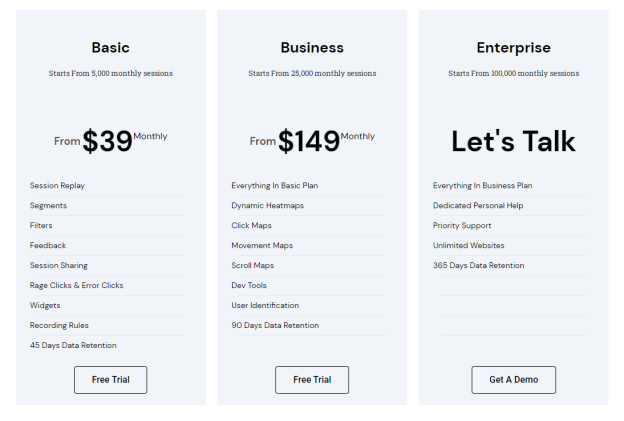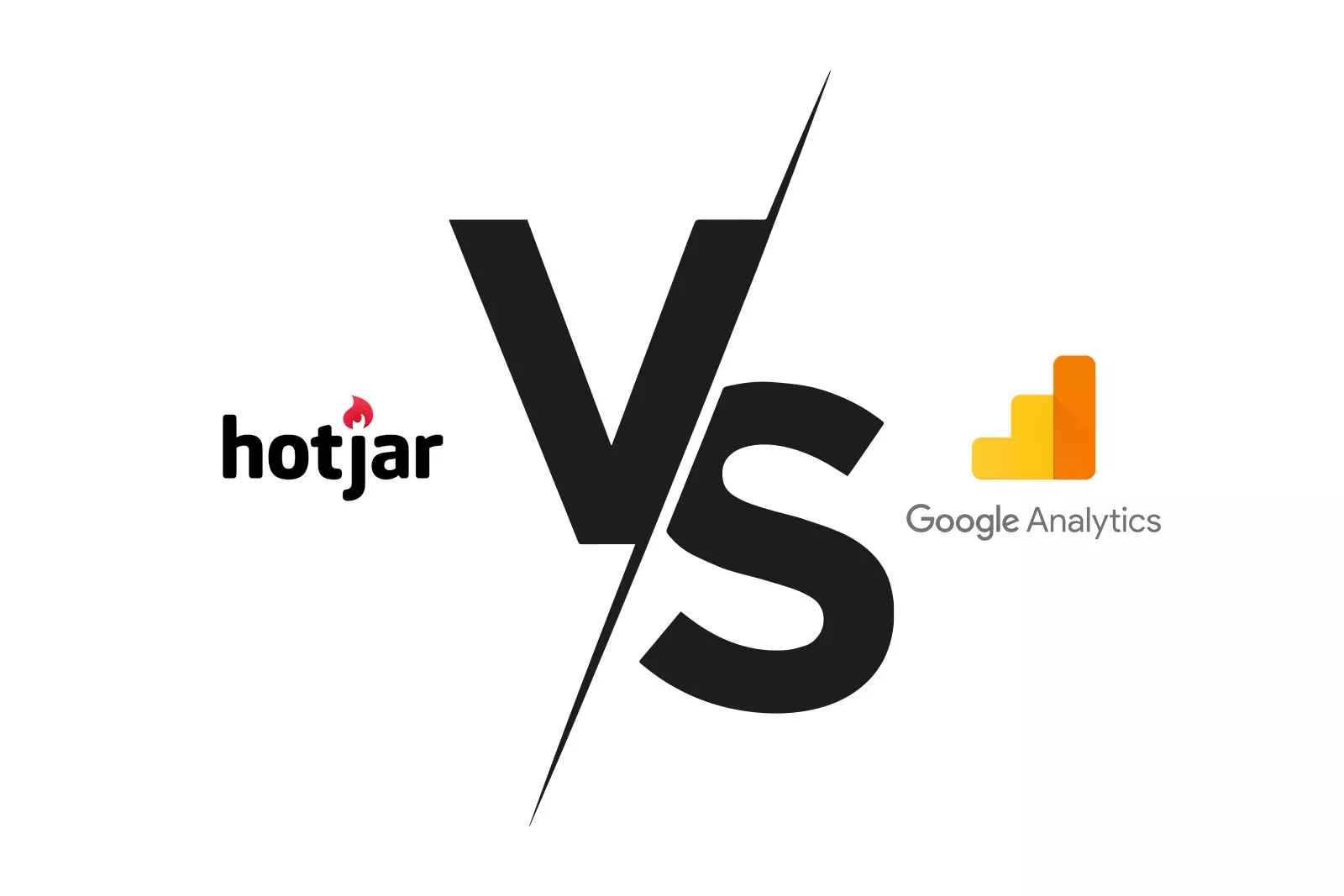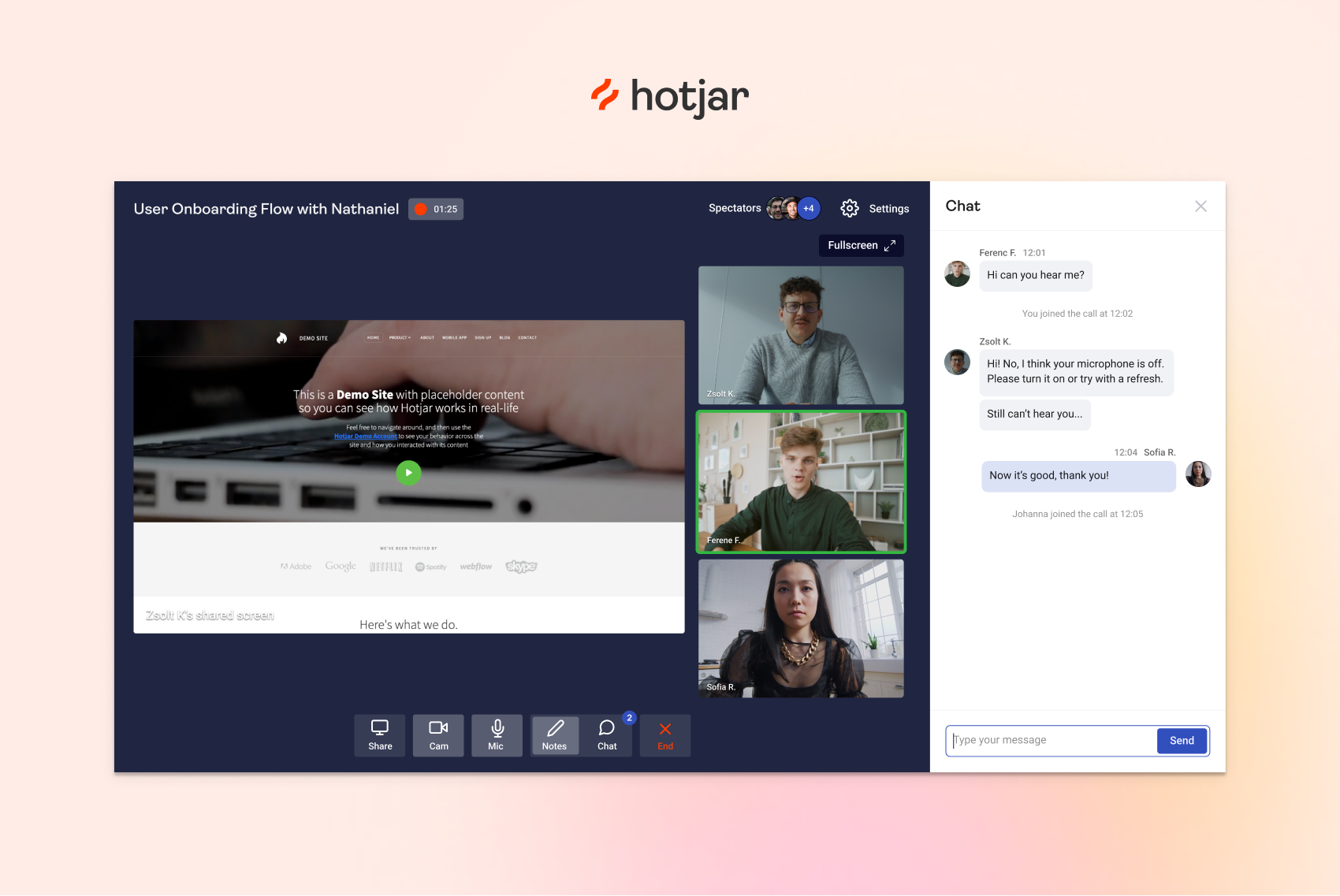As an online business owner, you must know how your users interact with your web app, landing page, website, or...

Concept Testing: Everything You Need to Know
Whether you’re testing new products, pricing structures, or marketing ideas, you want to run it by the people whose feedback matters the most: your target audience. This is called concept testing.
In this article, we’ll dive deep into the definition of concept testing, the benefits of concept testing, concept testing use cases, and how to run a concept test.
What is Concept Testing?
Concept testing is a research methodology used to evaluate consumer response to a product, service, idea, or marketing campaign before you launch it to the market. The goal is to validate the appeal, usability, and potential success of the concept from the perspective of the end-user or consumer.
In other words, concept testing is seeing whether your product, service, or idea will resonate with your target audience or not. Essentially, it’s like determining if what you have right now is more likely to be a success or a flop.
What is the Point of Concept Testing?
Concept testing is a necessary step in the early development stage of a product, service, marketing message, or branding idea. However, some businesses might think otherwise and go straight into prototyping or further product development.
While the alternative might seem like a faster and more cost-effective approach, these benefits of concept testing should convince you to take the right route:
Saves Time and Money
Diving headfirst into development without a clear indication of market demand or user interest is like navigating a maze blindfolded.
Concept testing acts as the guide that helps you identify viable paths and dead ends before you invest significant time and financial resources. Validating your concept early on can help you avoid the sunk costs associated with developing products or services that lack product market fit. In turn, concept testing makes the development process focus on what truly matters to your target audience.
Reduces Mistakes
Mistakes in product development are not just common; they’re expected. However, the goal is to catch and address these mistakes as early as possible.
Concept testing serves as a feedback loop and offers critical insights into potential misalignments between the product and its intended users’ expectations or needs.
Supports the Development Process
Aside from validating ideas, concept testing supplements the development process with incredibly nuanced insights into consumer preferences, behavior, and expectations.
Such feedback can inspire innovation and uncover opportunities to add features or make changes that you haven’t thought of before. These improvements can further increase your concept’s value proposition and, consequently, its market appeal.
Increases Profitability
Making sure that a concept aligns with market demands and consumer preferences can help maximize your profitability.
Products or services that resonate well with the target audience are more likely to bring you higher sales, command premium pricing, and foster brand loyalty. The early identification of a winning concept allows you to allocate your marketing and production budgets more effectively, which helps maximize your return on investment (ROI).
Concept Testing Methods
Before we dive into how to concept test, let’s talk about the three main concept testing methods you can consider. Each method will have its unique strengths and weaknesses, depending on the particular concept you want to test.
Comparative Testing
Comparative testing involves presenting multiple concepts to the target audience at the same time to determine which one resonates the most.
This concept testing method is particularly useful for deciding between variations of a concept, making it easier to decide which features or aspects are most appealing. In turn, you can decide which concept to develop further.
Example: a beverage company tests three new flavored waters—cucumber mint, peach ginger, and lemon lavender—by setting up tasting booths at shopping malls. Survey participants try all flavors and then rank them, providing the company with direct comparisons to determine the most appealing flavor based on consumer preferences.
Monadic Testing
In monadic testing, each respondent evaluates a single concept in isolation and provides detailed feedback on its strengths and weaknesses.
This approach offers insights into a single concept in depth without the influence of direct comparison, which is why it’s the go-to method for in-depth analysis.
Example: A tech company developing a new smartwatch focuses on three features: fitness tracking, health monitoring, and battery life.
They divide participants into groups, with each group evaluating only one feature through detailed information and mock-ups. The monadic testing method allows the company to gather in-depth feedback on each feature without comparison interference.
Sequential Monadic Testing
The sequential monadic testing method combines elements of both comparative and monadic testing. This method has respondents evaluate multiple concepts one after the other and allows for detailed feedback on each concept.
However, there is still room for some level of comparison, which can provide a balanced view of each concept’s merits.
Example: A streaming service evaluating two new UI designs conducts a study where participants use and assess each design in sequence. They interact with UI Design A, complete a survey, and then repeat the process with UI Design B.
This method combines detailed individual feedback with the ability to compare preferences for the UI designs based on the same participants’ experiences.
How to Create an Effective Concept Testing Survey
The best way to conduct marketing concept testing is via surveys. Surveys can measure both quantitative and qualitative data, are easy to conduct at scale, and are relatively cost-effective.
Regardless of what concept testing method you choose, there are several best practices to keep in mind:
Set Clear Objectives
Before drafting your survey, pinpoint exactly what you hope to learn. Your objectives might include understanding consumer perception of your product, gauging interest in a new feature, or assessing price sensitivity.
These goals will shape your survey’s structure and content and help ensure each question will lead to meaningful and usable insights.
Use Various Survey Questions
Diversity in survey question types can widen the feedback and insights you receive. Mix open-ended questions to capture nuanced opinions and stories, multiple-choice questions for straightforward, quantifiable data, and ranking or rating questions to gauge preferences and priorities.
Here are a few examples of concept test questions:
- How likely are you to use/buy this product if it were available today?
- Which of the following features of [Product/Service] do you find most appealing?
- How would you improve this product/service? (Open-ended)
- How well does this concept align with your perception of our brand?
- What words come to mind when you think about this concept? (Open-ended)
- Compared to our current offering, how would you rate this new concept?
- If you had to choose between [Concept A] and [Concept B], which would you prefer?
Ask Demographic Questions
Understanding who your respondents are can be as important as understanding their opinions. Include questions about age, gender, location, and other relevant demographics at the beginning of your survey.
Demographic data lets you segment responses and tailor your analysis. Therefore, you can see how different groups perceive your concept, which can be invaluable for targeted marketing strategies.
Consider Likert Scales
Likert scales are a powerful tool for measuring attitudes and opinions across a spectrum. They ask respondents to indicate their level of agreement or disagreement with a statement on a scale (e.g., from “Strongly Agree” to “Strongly Disagree”).
These scales can provide clear, quantifiable insights into how your target audience feels about various aspects of your concept, from overall appeal to specific features.
Include High-Quality Images
If you’re testing a visual concept, make sure that the images you include are high-resolution. The same applies when you’re doing a comparison test on two or more concepts, such as logos, social media templates, and typography.
Clear and detailed visuals allow respondents to fully appreciate the nuances of the design, color schemes, and other aesthetic aspects, which leads to feedback that is more accurate and reflects their true perceptions and preferences.
Ask Multiple Follow-questions
Initial responses often only scratch the surface of consumer perceptions and preferences, which is why asking follow-up questions is a must. These questions provide clarity and detail and allow researchers to understand the nuances behind participant feedback.
Deeper insights are crucial for fine-tuning concepts, addressing specific concerns, and potentially uncovering innovative ideas or unexpected market trends that initial questions might not reveal. Plus, follow-up questions help you validate initial findings and back decisions based on data.
When Should You Use Concept Testing?
Concept testing is a versatile tool that you should use at various stages of the development and marketing process. However, there are a handful of situations where concept testing becomes a must rather than a nice-to-have:
Product Development
At the heart of product development, concept testing can validate your idea before you commit significant resources to it. In other words, concept tests let you know whether your product is heading in the right direction or not.
Concept testing helps you assess market needs, understand consumer preferences, and identify potential improvements or adjustments. Whether it’s a completely new product or an update to an existing line, concept testing can save time, reduce costs, and increase the likelihood of market acceptance.
New Website or Re-Design
An entirely new website or a major website relaunch is both expensive and time-consuming. Either way, you wouldn’t want your investment to go to waste.
When you’re either kicking off a brand-new website or revamping one that already exists, diving into concept testing can reveal what users prefer in terms of design and experience. Conducting a concept test helps you create a site that is visually appealing and user-friendly. Plus, you can gauge if your content communicates your message to the intended audience the way you want it to.
Brand Testing
Introducing a new brand or refreshing an existing one might come with a mix of negative and positive reactions. So, you need concept testing to gauge how existing and potential customers view your brand as a whole. This process might include logo testing, comparison testing for two different taglines, and gathering reactions about your typography.
Essentially, concept testing for branding answers critical questions: Does your brand’s voice echo in the hearts and minds of your audience? Are your values in harmony with those of your consumers? Does your visual identity captivate and communicate effectively?
Ad Testing
Concept testing can serve as a preventative measure against misfires before you deploy marketing campaigns. It evaluates audience reaction to various elements of your ads, such as the messaging, visuals, and calls to action.
Then, you can use the feedback for further improvement and ensure the campaign resonates with and motivates your target demographic.
New Pricing Structure
Changing your pricing model is bound to come with some risks, especially if you’re raising the prices of your most popular products or services.
You can use concept testing to gauge customers’ reactions to price changes and understand perceptions of value at different price points. The results of your concept test make it easier to develop a pricing strategy that maximizes both revenue and customer satisfaction.
Marketing Messages
The success of your marketing efforts heavily depends on the clarity, appeal, and resonance of your messages with your audience.
Concept testing helps you determine which messages are most effective at engaging and converting your target audience. Plus, it serves as a helpful guide in honing your overall communications strategy.
What Concept Tests are NOT
Concept testing is not a replacement for product development, market research, ongoing customer feedback systems, or the ideation phase. Instead, it’s an early-stage technique to gather insights on initial concepts, mainly done to save resources and make sure you’re heading the right way.
In some cases, it can also be an effective method to identify the most promising concept among multiple options. This benefit can be particularly useful when you find yourself at a crossroads with more than one product idea with lots of potential.
Gather Invaluable Customer Feedback With FullSession
In-depth concept testing is the secret to creating successful products that don’t require you to empty your development and market research budget. You’re not just finding out whether you’re heading in the right direction–you’re also saving resources that you would have otherwise unnecessarily spent without early-stage testing.
Want another way to save money? Use FullSession to see how your target audience feels about your product ideas, design concepts, existing features, and more.
FullSession gives you access to the best analytics tools, including:
- Interactive Heat Maps: Get visuals on where your users are clicking, what elements they find most interesting, and which ones they are ignoring.
- Customer Feedback Tools: Customize your own feedback forms and find out what your users really think about your website.
- Session Recordings and Replays: See how your users are interacting with your website and the potential frustration points they might be encountering.
- Market Segmentation and Filtering: Divide users into distinct categories for more comprehensive market research.
FullSession Pricing Plans

The FullSession platform offers a 14-day free trial. It provides two paid plans—Basic and Business. Here are more details on each plan.
- The Basic plan costs $39/month and allows you to monitor up to 5,000 monthly sessions.
- The Business plan costs $149/month and helps you to track and analyze up to 25,000 monthly sessions.
- The Enterprise plan starts from 100,000 monthly sessions and has custom pricing.
If you need more information, you can get a demo.
Install Your First Concept Testing Survey Right Now
It takes less than 5 minutes to set up your first website or app feedback form, with FullSession, and it’s completely free!
FAQs About Concept Testing
How often should I do concept testing?
Whenever you’re making significant changes or introductions, the frequency depends on your pace of innovation and market dynamics. If you’re in a sector that’s constantly evolving, such as technology or fashion, you might find yourself engaging in concept testing more frequently to stay ahead of the curve. On the other hand, in more stable industries, you might dial it back a bit.
Is concept testing expensive?
It can vary, but the cost of not doing it—like launching a flop—can be far greater. For instance, digital surveys or focus groups can be relatively cost-effective, especially if you have access to an engaged customer base willing to provide feedback. On the other end of the spectrum, more extensive, in-depth testing methodologies involving prototype development or hiring external agencies can significantly increase costs.
Can I do concept testing in-house?
Conducting concept testing in-house is entirely feasible and can be an excellent way to maintain control over the process while keeping costs down. Many businesses successfully implement internal surveys, utilize social media polls, or conduct informal focus groups using their existing resources.





